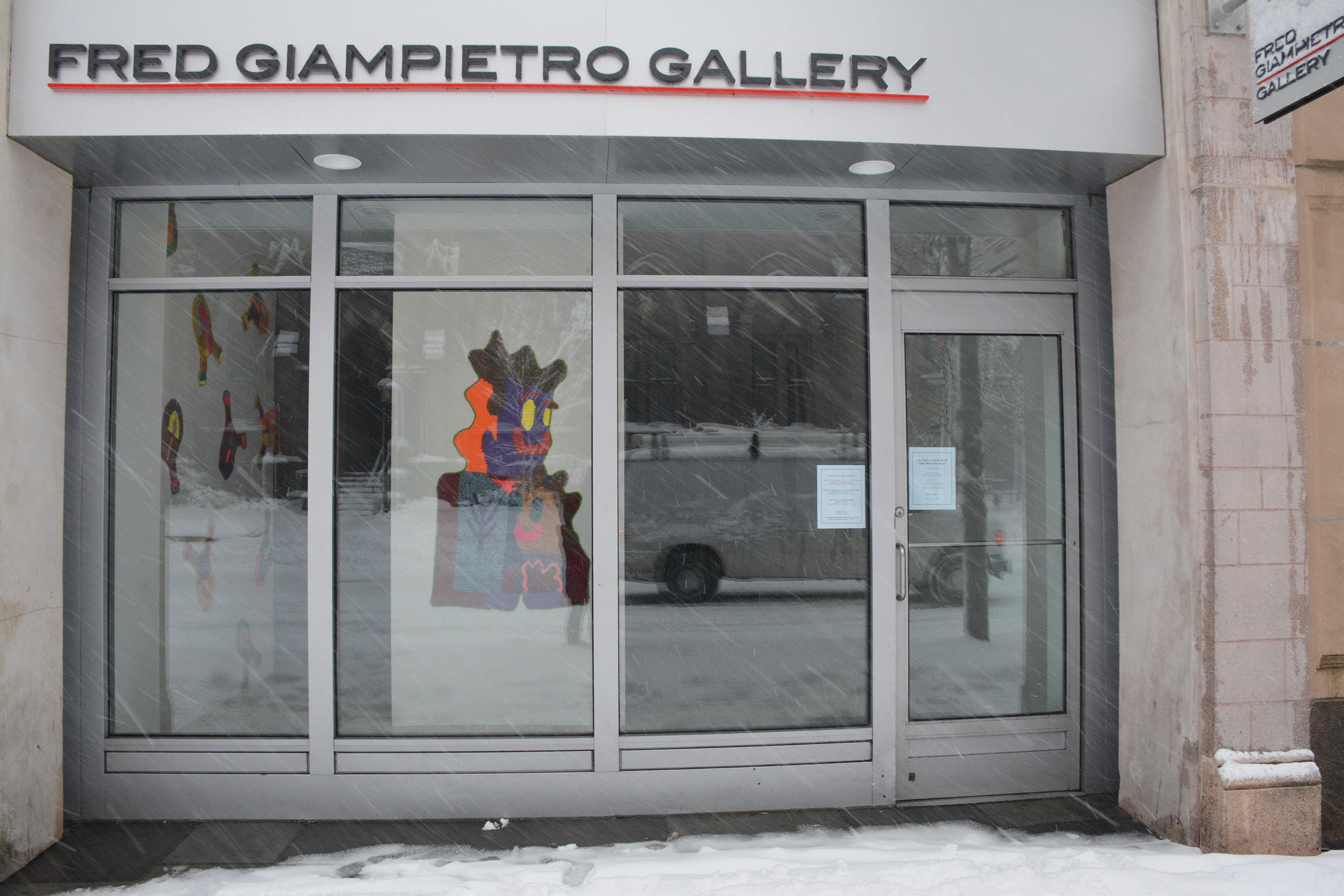
Walking into “The Joi of Lyfe” exhibit is much like stepping into the mindcastle of a kindergartener — the images he would draw could cleanly convey his beaming impressions of the world. Or, should I say, the images *they* would draw, for the underlying theme of the work of Caroline Wells Chandler, the exhibit’s featured artist, is separation from socially constructed definitions such as gender and “queerness as the normative state.” But, if that is too nebulous an explanation, in the artist’s own words, this collection explores “the triumphant return of Ongo: the voyager of this tale. Ongo is a halfling born of a trumpa lumpa and a rose queen. In this chapter he has returned to the village of the Ivory Fortress accompanied with friends, helpers, guides and most importantly S.C.O.T.T.’s to spread good, good, good, good vibrations.”
I think that story snippet accurately describes his display. Walking in, I felt inclined to think in spurts, or exclamations, or any communication which skips the filter of socially constructed mandatory mental processing. Chandler’s collection is comprised of large crocheted smiling people-blobs engaging energetically with each other. Each shape is distinctly human, but the vibrant colors and basic shapes — like a child drawing the parts they know compose the human form rather than drawing what they see directly from reality — make it so the gender, ethnicity, age or really any specific quality is impossible to identify. This does not mean the people look all the same. It’s the emotion in each person-blob, inspired by people from Chandler’s life, which differentiates them and allows them to carry unique charm. Chandler highlights their individuality by naming each personality.
“Chris” smiles on one wall, his lower eyelids raised halfway as if fighting back a well of excited tears; he runs in socks along the path of his gaze which is locked with the eyes of “Tamara” who is landing from flight, cape fluttering, feet socked and with her upper eyelids drooped in an expression of drunken, blind love for “Chris.” The adjoining walls display a spectrum of love varying from the playfulness of the many jumping “B.E.R.T.’s” to the purposeful comradery which accompanies “Jennifer,” “Travis” and “Rachel’s” drum circle.
I was struck then, by the more somber tone of Larry Lewis’s collages in the second half of the room. His art featured similar pop colors to Chandler’s work, but both the texture and tone present in his pieces felt more staring and accusatory. While Chandler’s people-blobs leaping from the walls with their soft, bumpy, yarny surfaces felt freed from social expectation, Lewis’s pieced-together forms, crinkled from drying glue, felt bound by it. Made of advertisements, labels and other bits of consumer culture literally plastered into place, the people in his art are built by the propaganda of their surroundings.
In one larger piece, a simply depicted woman dons a neon heart over her chest, it reads: “Hearts of the World.” Near the hem of her long solid red dress is a clipping in matching neon and large clear font advertising the “Roche Electric Hygiene Machine” which promises to miraculously heal you from a wide assortment of diseases, ranging from prostate gland trouble to varicose veins, traipsing far and wide across any need someone might have, mocking the consumerism that expanded throughout the course of Lewis’s life in the late 20th century and which persists in modern day America. It seems to address the pains of life and the human draw to a cure-all, providing well-being and persistent happiness, while casting doubt through the blank stares of his figures on whether consumption is the proper means to an end.
Paired together, these collections as one exhibit showcase the unity of what it means to be human, the timeworn question of how nature and nurture play together. Chandler’s work reminds the viewer of each person’s individuality and potential for love, and Lewis’s brings you to pause and consider how and why that individual has been morphed, broken and reassembled as they move forward through life. It is a two-part exhibit which, if you will, explores the “i” in joi and the “why” in lyfe.
Contact Julia Leatham at julia.leatham@yale.edu .







